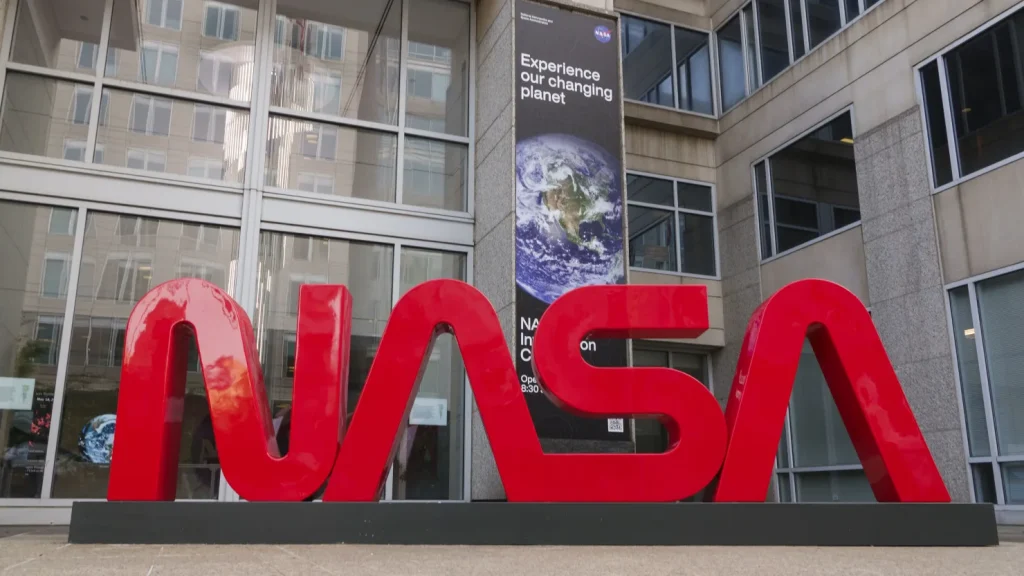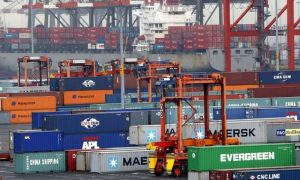Key points
- China and Russia plan similar projects
- Solar power unreliable
- Nuclear seen as essential
- Experts raise concerns over funding
ISLAMABAD: NASA is accelerating plans to build a nuclear reactor on the Moon by 2030, according to US media reports, as part of broader ambitions to establish a permanent human base on the lunar surface.
Acting NASA head Sean Duffy, appointed by President Donald Trump, urged the agency to push forward with the project, warning that rivals like China and Russia could “declare a keep-out zone” on the Moon, reports the BBC.
#BREAKING : US to Deploy Nuclear Reactor on Lunar Surface by 2030
The US is planning to install a 100 kW nuclear reactor on the Moon by 2030, aiming to carve out “keep-out zones” in space, according to a Politico exclusive.
Transportation Secretary and interim NASA head Sean… pic.twitter.com/TmPjnVsap3
— upuknews (@upuknews1) August 5, 2025
His letter, seen by the media, called for commercial proposals to design a reactor capable of generating at least 100 kilowatts—enough to support basic lunar infrastructure but far below Earth-based energy needs.
NASA under Trump aims to build nuclear reactor on moon before China and Russia https://t.co/bJVEuJoXSU
— CNBC (@CNBC) August 5, 2025
While the idea is not new—NASA awarded initial reactor design contracts in 2022—Duffy’s directive comes amid global competition. China and Russia recently announced plans to build an automated nuclear power station on the Moon by 2035. Several nations, including India and Japan, are also pursuing lunar exploration and eventual settlement.
Moon’s extreme day-night cycle
Experts say nuclear power is essential for any long-term lunar presence. The Moon’s extreme day-night cycle—14 Earth days of sunlight followed by 14 days of darkness—makes solar power unreliable.
“Even a small crew habitat would need megawatt-scale power. Solar arrays and batteries alone cannot deliver that reliably,” said Dr Sungwoo Lim, space applications lecturer at the University of Surrey. “Nuclear energy is not just desirable—it’s inevitable.”
The U.S. Government’s Transport Secretary Sean Duffy Set To Unveil Expedited Plans for NASA to Build Nuclear Reactors on The Moon. Projected to Launch by 2030. First Country Can Declare a Lunar Keep Out Zone. Rolls Royce Released this Video.-Politico pic.twitter.com/9ckXlS1G5d
— Sputnik (@VasBroughtToX) August 5, 2025
Prof Lionel Wilson, of Lancaster University, agrees the 2030 goal is achievable, provided NASA commits enough funding and Artemis launches proceed on schedule.
Artemis is NASA’s flagship programme aiming to return humans to the Moon, with Artemis 3 targeting a 2027 crewed landing. However, that timeline remains uncertain following a series of delays and budget cuts.
Funding cuts
Duffy’s announcement follows news of a proposed 24 per cent cut to NASA’s 2026 budget, including major reductions to science missions like the Mars Sample Return. That has fuelled criticism that the Moon reactor push is driven more by geopolitics than science.
“This feels like a return to Cold War-style space rivalry,” said Dr Simeon Barber, a planetary scientist at the Open University. “It’s disappointing if national interests are now taking priority over scientific collaboration.”
There are also safety concerns. Launching nuclear materials from Earth requires special licences and poses risks, though experts say these are manageable.
Establishing safety zones
Under the 2020 Artemis Accords, countries can set up “safety zones” around lunar operations to prevent interference. But some worry this could be used to claim territory by stealth.
“If you build a reactor or base and set up a safety zone, that’s essentially saying ‘this bit of the Moon is ours,’” said Dr Barber.
He also questioned the coherence of current plans. “If we get a reactor on the Moon but no infrastructure or crew to use it, what’s the point? Things aren’t very joined up right now,” he added.




























